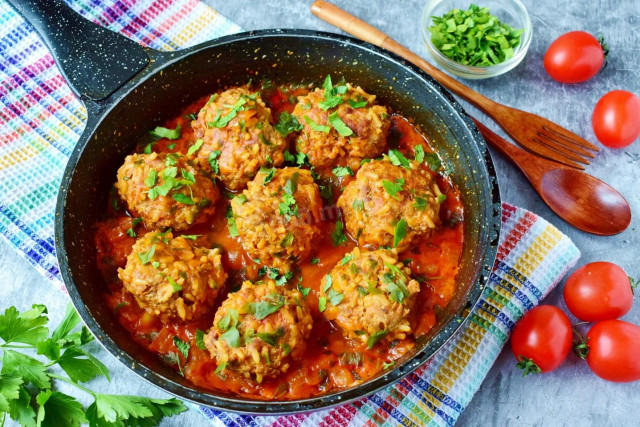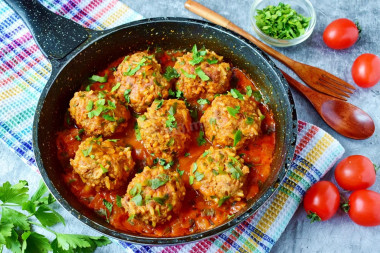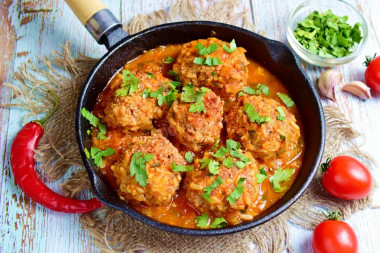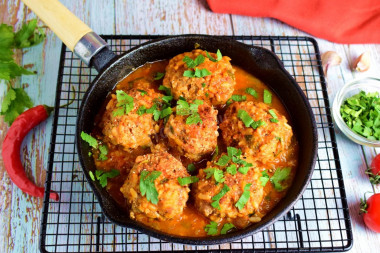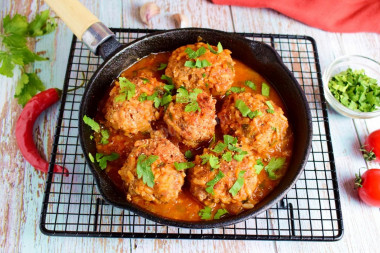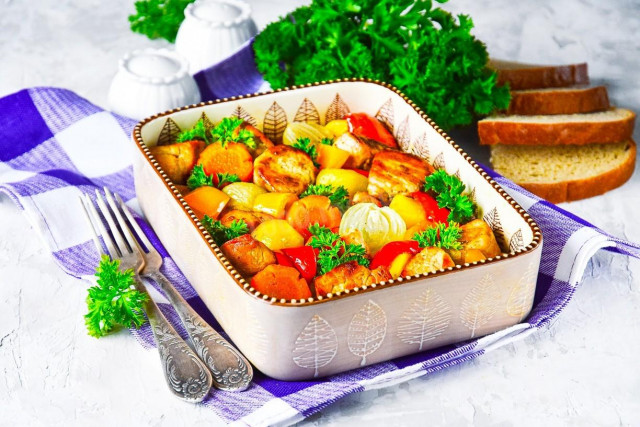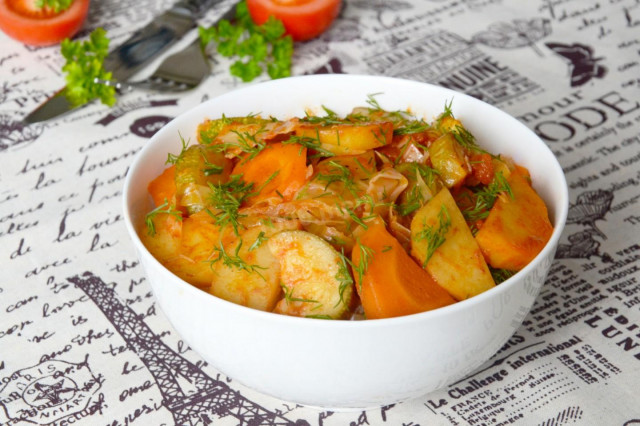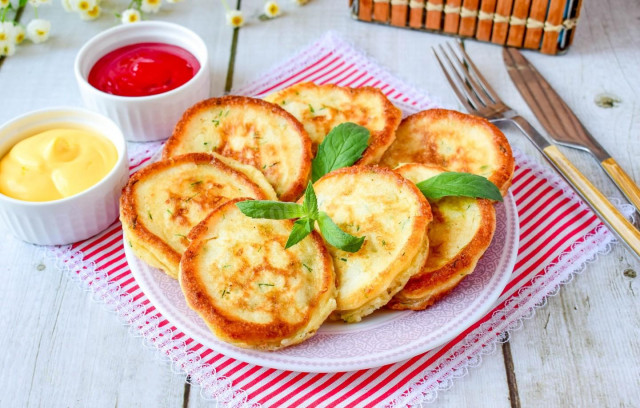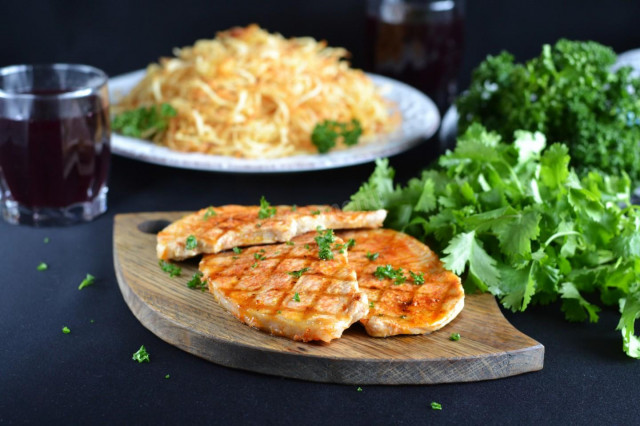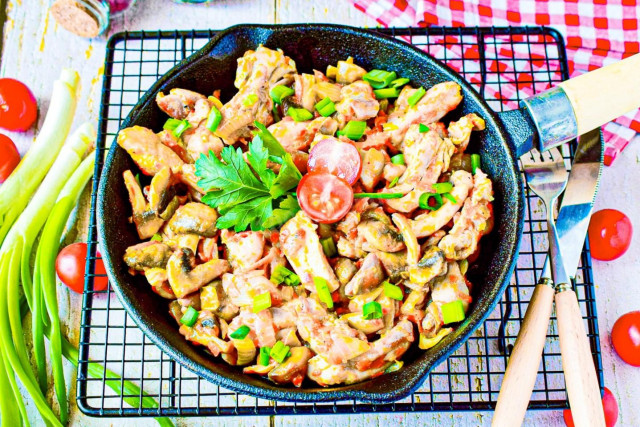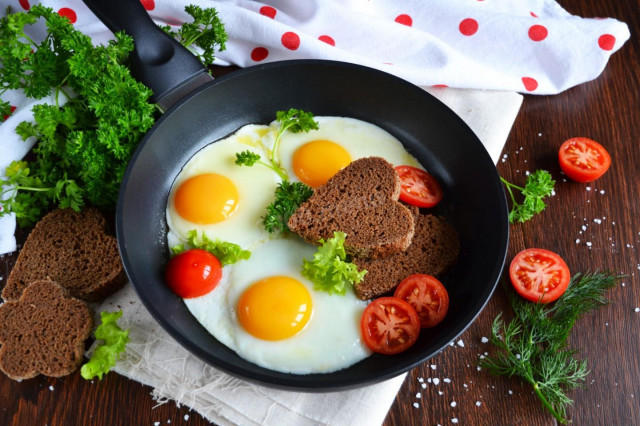Composition / ingredients
Step-by-step cooking
Step 1:
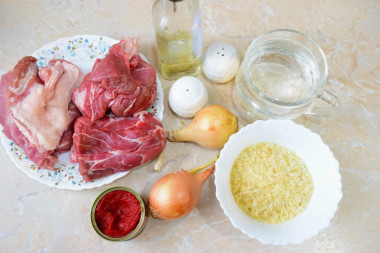
How to make hedgehogs from minced meat with rice in a frying pan? Prepare the necessary ingredients for this. We will cook hedgehogs from two types of meat - pork and beef.
Step 2:
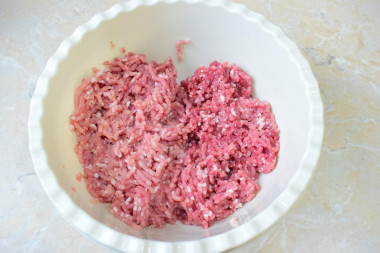
The first step is to turn the meat into minced meat. To do this, cut pork and beef into pieces and pass through a meat grinder.
Step 3:
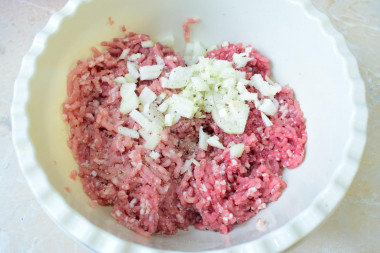
Peel the onion and rinse in cold water. Finely chop one onion and add it to the minced meat.
Step 4:
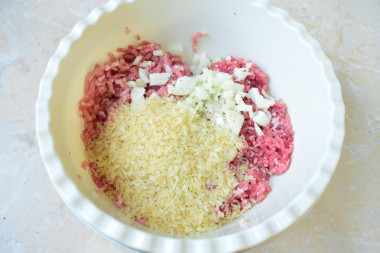
Wash the rice several times in cold water, and then add to the bowl to the minced meat. Add a little salt and spices to taste.
Step 5:
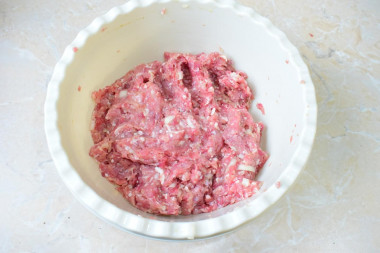
Mix all the ingredients well until smooth. The meat mass will be dense enough to make balls.
Step 6:
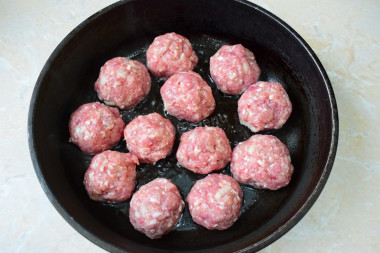
Pour a little vegetable oil into the frying pan and heat it up to a hot state. With wet hands, make balls of minced meat and put them in a hot frying pan. Fry them on all sides.
Step 7:
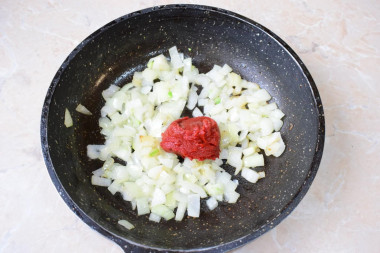
Heat another frying pan separately. Finely chop the second onion and fry with the addition of a small amount of vegetable oil for 2-3 minutes. Then add the tomato paste to the onion and warm it together with the onion for another 1-2 minutes.
Step 8:
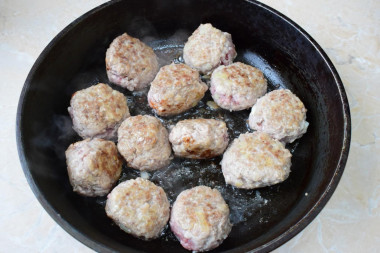
During the frying of onions, meat balls have already been fried from all sides.
Step 9:
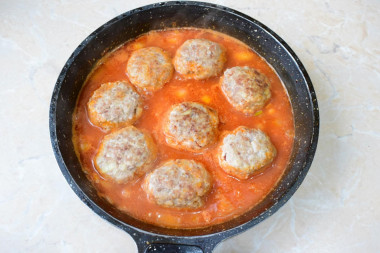
Put the meat hedgehogs in the frying pan for frying. Add water and bring everything to a boil. Cover with a lid and simmer over low heat for 20-25 minutes. During this time, the rice will become soft and increase in size. The risinki will stick out of the meat balls in all directions and will resemble hedgehogs in their appearance. The amount of water can be slightly changed depending on how much gravy you want to get.
Step 10:
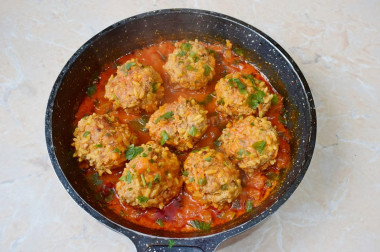
Meat hedgehogs are ready! A great addition to them will be mashed potatoes.
Step 11:
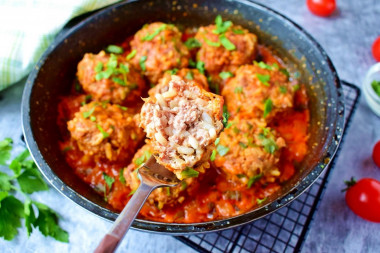
Bon appetit!
Beef can be replaced with any other type of meat that you like best. But keep in mind that the cooking time, as well as the taste and calorie content of the dish will change. Pork and lamb tend to be fatter than beef, and chicken fillet or turkey are leaner. At the same time, the cooking time depends not only on the type of meat, but also on which part of the carcass is used and how old or young the meat is.
You can check whether the oil has warmed up well enough in a frying pan in a simple way. Lower a wooden spatula into it. If bubbles have gathered around it, then you can start the frying process.
Caloric content of the products possible in the composition of the dish
- Onion - 41 kcal/100g
- Melted beef fat - 871 kcal/100g
- Fat beef - 171 kcal/100g
- Lean beef - 158 kcal/100g
- Beef brisket - 217 kcal/100g
- Beef - okovalok - 380 kcal/100g
- Beef - lean roast - 200 kcal/100g
- Beef shoulder - 137 kcal/100g
- Beef - ribs - 233 kcal/100g
- Beef - ham - 104 kcal/100g
- Beef - tail - 184 kcal/100g
- Boiled ham - 269 kcal/100g
- Beef corned beef - 216 kcal/100g
- Pork fat - 333 kcal/100g
- Pork meat - 357 kcal/100g
- Pork - low-fat roast - 184 kcal/100g
- Pork chop on a bone - 537 kcal/100g
- Pork - schnitzel - 352 kcal/100g
- Pork shoulder - 593 kcal/100g
- Boar's leg - 113 kcal/100g
- Pork - 259 kcal/100g
- Raw wild rice - 353 kcal/100g
- Brown raw rice - 360 kcal/100g
- Boiled brown rice - 119 kcal/100g
- White fortified raw rice - 363 kcal/100g
- White fortified boiled rice - 109 kcal/100g
- White rice, steamed, with long grains raw - 369 kcal/100g
- Steamed white rice, boiled with long grains - 106 kcal/100g
- Instant dry rice - 374 kcal/100g
- Instant rice, ready to eat - 109 kcal/100g
- Fig - 344 kcal/100g
- Vegetable oil - 873 kcal/100g
- Tomato paste - 28 kcal/100g
- Salt - 0 kcal/100g
- Water - 0 kcal/100g
- Spices dry - 240 kcal/100g

